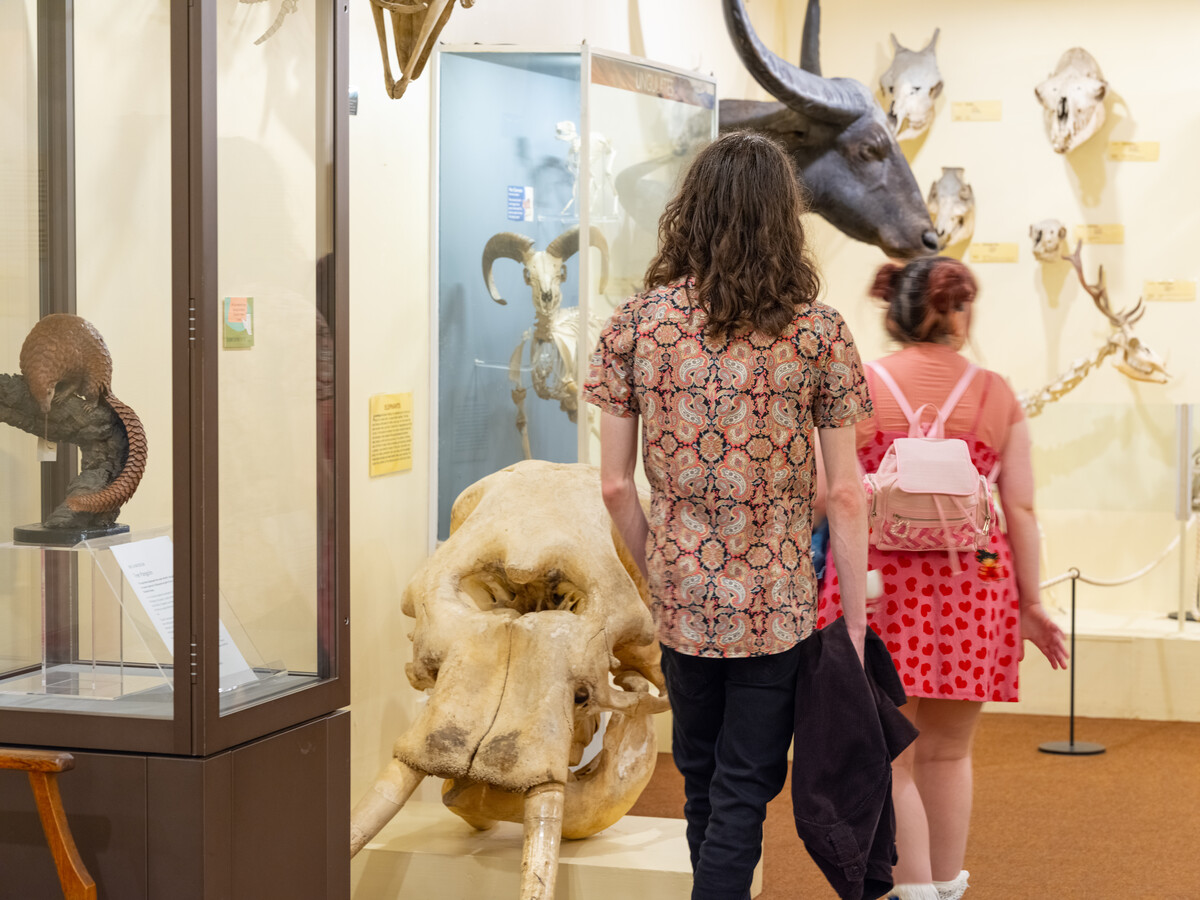
Bones

Skulls and skeletons from an extensive collection are on show here, demonstrating the similarities and differences between a fascinating range of creatures, great and small.
The Osteological or Skeleton Gallery is based on the collection of Frederick William Lucas (1842-1932), a local solicitor with a keen interest in zoology. He acquired his objects and specimens from auctions as well as from other collectors and travellers, and displayed them at his home in Rottingdean.
Donated to Brighton Museum after the First World War, the collection includes the bones, skulls and skeletons of birds, mammals, reptiles, amphibians and fish.

Hoofed and pouched mammals
At the Booth Museum today, the skeletons on display include pouched mammals, such as kangaroos and rare Tasmanian devils. Among many others, you’ll also encounter the skeletons of hoofed mammals, rodents, monkeys, chimpanzees and dolphins, each distinctive in its own way. There is an enormous elephant skull and a number of stuffed or preserved specimens, including an imposing taxidermy brown bear.
Articulated skeletons
The articulated skeletons have a mesmerising quality and the range of creatures presented here is immense, from a fragile Lesser Mouse Lemur from Madagascar to a sturdy domestic horse and, of course, a human. Skeletons of birds are also represented, from large species such as emu and albatross to a tiny hawfinch.
The gallery features poems written by local schoolchildren responding to the skulls and bones on display, and a temporary exhibition of wildlife photography.
Dinosaurs
The Booth also displays a Raptor skull, Iguanodon thumb spike, tooth, vertebrae, and skull, alongside an impressive Deinonychus skull. This dinosaur is recognisable as one of those used in the Jurassic Park kitchen scene. However, the dinosaur at the Booth is referred to by it’s real name, not the easier to pronounce velociraptor they called it in the movie. Also unlike in the Jurassic films, the Deinonychus had feathers. You can learn more about this and other Dinosaurs during your visit.